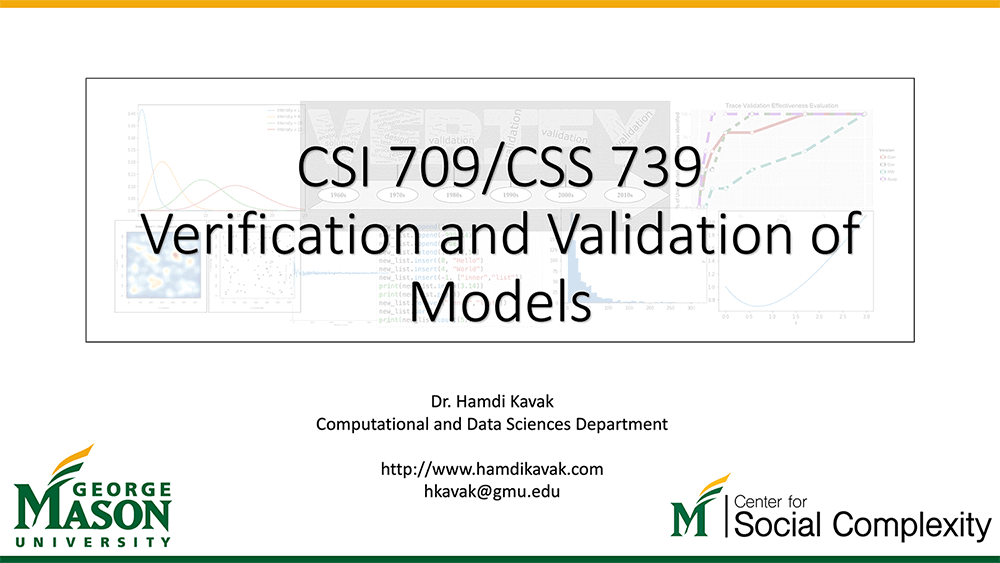New verification and validation of models course at GMU

Now that data science (or as some call AI) has become very popular and modeling and simulation is getting a lot of attention (see companies like HASH), it is the right time to think about how to make these technologies even more rigorous and avoid potential misuses that have been surfacing lately. Verification and validation (V&V) is perhaps one of the first methodological practices when it comes to developing data science or simulation models. Verification usually refers to checking the correctness of the code, while validation refers to checking the correspondence between model results and expected results. These loose definitions are not sufficient, and, based on my anecdotal experience, the V&V process is often overlooked or blindly conducted. As a researcher who contributes to both data science and modeling and simulation, I find it very critical to discuss potential challenges and pitfalls of such models with the new generation researchers. Therefore, I am offering a new graduate-level class called Verification and Validation of Models this Fall to discuss such issues. The course is cross-listed in the Computational Science and Informatics (CSI) and the Computational Social Science (CSS) programs at GMU. Check out course description below:
Verification and Validation of Models (CSI 709/CSS 739)
Semesters offered: Fall 2020 (Online)
Computational models come in different forms ranging from machine learning models that predict/classify patterns to agent-based models that investigate emergent phenomena from a bottom-up perspective. Regardless of their form, all computational models should go through the Verification and Validation (V&V) process, which checks the correctness of the model design and performance. The proliferation of high-level frameworks and tools make it possible to bypass or overlook such steps. This graduate-level course aims to teach and improve V&V practices, which is considered as an essential methodological step in model development. Some of the topics include terminology and history of V&V, statistics for V&V, verification techniques, validation techniques, validation of data-driven models, and validation in the absence of data, among many others. Students will further their knowledge with writing assignments and a term project.

